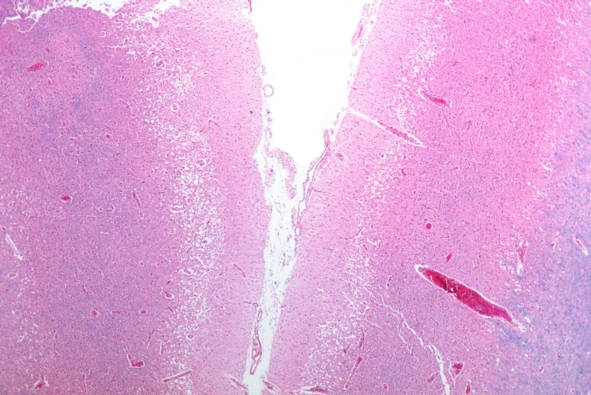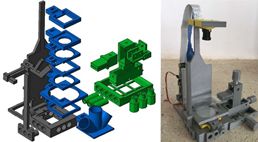neuroscience
See the following -
A Bionic Eye That Restores Sight
By bridging the gap between eye and brain, a new device has the capacity to help the blind regain their vision...
- Login to post comments
A Hidden Factor in Stroke Severity: the Microbes in Your Gut
 The bacteria that inhabit our guts have become key players for neuroscientists. A growing body of research links them to a wide array of mental and neurological disorders—from anxiety and depression to schizophrenia and Alzheimer’s disease. Now a study in mice published this week in Nature Medicine suggests that striking the right microbial balance could cause changes in the immune system that significantly reduce brain damage after a stroke—the second leading cause of both death and disability for people around the globe. (Scientific American is part of Springer Nature.)...
The bacteria that inhabit our guts have become key players for neuroscientists. A growing body of research links them to a wide array of mental and neurological disorders—from anxiety and depression to schizophrenia and Alzheimer’s disease. Now a study in mice published this week in Nature Medicine suggests that striking the right microbial balance could cause changes in the immune system that significantly reduce brain damage after a stroke—the second leading cause of both death and disability for people around the globe. (Scientific American is part of Springer Nature.)...
- Login to post comments
Academia.edu Founder On Open Access Dreams
Discoveries by laypeople are rare but free access to research results would increase the likelihood, says Richard Price
- Login to post comments
Brainstorm Tech Spotlight: Danae Ringelmann, Co-Founder And CCO Indiegogo
Fortune's Brainstorm Tech Conference (July 22-24 in Aspen, Colo.) regularly brings together the best and brightest minds in tech innovation. Each week, Fortune turns the spotlight on a different conference attendee to offer his or her own personal insight into business, tech, and entrepreneurship. [...] Read More »
- Login to post comments
Distinguishing Brain From Mind
From the recent announcement of President Obama's BRAIN Initiative to the Technicolor brain scans ("This is your brain on God/love/envy etc") on magazine covers all around, neuroscience has captured the public imagination like never before. Read More »
- Login to post comments
DIY Lab Technique to Revolutionise Training for Neuroscientists
 A team of international researchers have come up with an inexpensive way to self-manufacture lab equipment, which could revolutionise the way neuroscientists across the world are trained. In a study published in the open access journal PLOS Biology, Dr Tom Baden from Sussex Neuroscience and André Maia Chagas, from the University of Tübingen, have devised a new imaging and microscope system called “FlyPi”. The equipment needed for modern neuroscience experiments can cost tens or even hundreds of thousands of pounds, which often means only institutions in rich countries can undertake top-level research and scientific training...
A team of international researchers have come up with an inexpensive way to self-manufacture lab equipment, which could revolutionise the way neuroscientists across the world are trained. In a study published in the open access journal PLOS Biology, Dr Tom Baden from Sussex Neuroscience and André Maia Chagas, from the University of Tübingen, have devised a new imaging and microscope system called “FlyPi”. The equipment needed for modern neuroscience experiments can cost tens or even hundreds of thousands of pounds, which often means only institutions in rich countries can undertake top-level research and scientific training...
- Login to post comments
Jeff Hawkins: Where Open Source And Machine Learning Meet Big Data
The Palm pioneer has turned to neuroscience and big data to create a path to truly intelligent machines -- a path open to the community's contributions Read More »
- Login to post comments
Nanoparticles On My Mind
 Nanoparticles are everywhere! By that I mean, of course, that there seems to be a lot of news about them lately, particularly in regard to health and healthcare.But, of course, literally they could be anywhere and everywhere, which helps account for their potential, and their potential danger. Let's start with one of the more startling developments: a team at the University of Miami's College of Engineering, led by Professor Sakhrat Khizroev, believes it has figured out a way to use nanoparticles to "talk" to the brain without wires or implants.They use "a novel class of ultrafine units called magnetoelectric nanoparticles (MENPs)" to penetrate the blood-brain barrier.
Nanoparticles are everywhere! By that I mean, of course, that there seems to be a lot of news about them lately, particularly in regard to health and healthcare.But, of course, literally they could be anywhere and everywhere, which helps account for their potential, and their potential danger. Let's start with one of the more startling developments: a team at the University of Miami's College of Engineering, led by Professor Sakhrat Khizroev, believes it has figured out a way to use nanoparticles to "talk" to the brain without wires or implants.They use "a novel class of ultrafine units called magnetoelectric nanoparticles (MENPs)" to penetrate the blood-brain barrier.
- Login to post comments
OpenWorm Is An Open-Source Virtual Worm, Accurate In Every Way
Predictive models are essential in engineering fields, but less common in biology, though accurate simulations of living organisms could help us understand disease, drug efficacy and neuroscience. Read More »
- Login to post comments
Oscars Of Science: Breakthrough Awards Hands Out $21m To Transform Physicists Into Rockstars
In Hollywood this week, the talk was all about the Golden Globe nominations, but several hundred miles to the north, Silicon Valley’s biggest names were enjoying a new kind of awards ceremony – and they invited one of the film industry’s favourite sons to host it. Read More »
- Login to post comments
Scientists Launch Open Source Computational Platform to Study Biological Processes
 Agent-based simulations (ABS) are powerful computational tools that help scientists understand complex biological systems. These simulations are an inexpensive and efficient way to quickly test hypotheses about the physiology of cellular tissues, organs, or entire organisms. However, many ABS do not take full advantage of available computational power, and the majority of ABS platforms on the market are designed with a particular use case in mind.
Agent-based simulations (ABS) are powerful computational tools that help scientists understand complex biological systems. These simulations are an inexpensive and efficient way to quickly test hypotheses about the physiology of cellular tissues, organs, or entire organisms. However, many ABS do not take full advantage of available computational power, and the majority of ABS platforms on the market are designed with a particular use case in mind.
- Login to post comments
SUBNETS Aims For Systems-Based Neurotechnology And Understanding For The Treatment of Neuropsychological Illnesses
DARPA seeks to develop new technology to enable near real-time measurement and analysis across brain systems to drive precise neural stimulation therapies Read More »
- Login to post comments
The Technology That Lets Deaf People Hear Could Also Treat Hearing Damage
When someone’s auditory nerve is damaged, a cochlear implant acts as a substitute for the lack of vital nerve cells...Gary Housley, director of the Translational Neuroscience Facility at the University of New South Wales, has published a study (paywall) demonstrating the process in animal models...
- Login to post comments
The World Cup's Mind-Controlled Exoskeleton
It’s rare for scientists to physically showcase their own work in public settings. But that's how science advances...
- Login to post comments
Tübingen neuroscientists develop inexpensive, self-manufactured lab equipment
 Laboratory equipment is one of the largest cost factors in neuroscience. However, many experiments can be performed with good results using self-assembled setups with 3-D printed components and self-programmed electronics. The inexpensive system called “FlyPi” developed by André Maia Chagas and Tom Baden allows for many standard lab processes including light and fluorescence microscopy, optogenetics, thermogenetics, and behavioural studies in small animals (e.g. round-worms, fruit flies, zebrafish larvae)...
Laboratory equipment is one of the largest cost factors in neuroscience. However, many experiments can be performed with good results using self-assembled setups with 3-D printed components and self-programmed electronics. The inexpensive system called “FlyPi” developed by André Maia Chagas and Tom Baden allows for many standard lab processes including light and fluorescence microscopy, optogenetics, thermogenetics, and behavioural studies in small animals (e.g. round-worms, fruit flies, zebrafish larvae)...
- Login to post comments